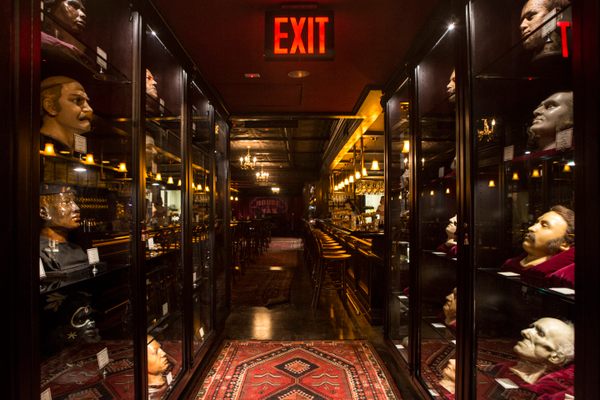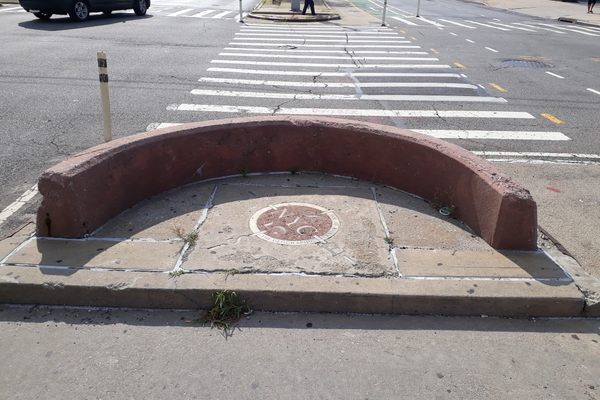In the midst of all the muck and mire of the subway lies a brilliant piece of artwork only accessible to the lucky straphangers on the B and Q lines. It is Masstransiscope, a modern interpretation of the popular Victorian optical toy, the zoetrope. It is located on the uptown platform of the closed/decommissioned BMT Myrtle Avenue local station.
Before the advent of film, there were several types of devices that created primitive forms of stop-motion animation, most notably the zoetrope. It was primarily comprised of a cylinder sitting on a spindle. Along the top of the cylinder’s exterior was a series of vertical slits and lining the bottom of the interior wall was a strip of sequential drawings. Activated with a quick spin from the viewer’s hand, the result was a delightful little movie.
There were two scientific principles at work here: persistence of vision and the Phi phenomenon. The former said that there needed to be a cycle of darkness and light for the eye to create a sense of movement (i.e. strobe lights). That effect was created with the cylinder’s pattern of slits. The latter said that our brains group together images that were seen in rapid succession in an attempt to create order.
The Phi phenomenon is evident in our daily commute: trains whizzing by while commuters gaze out at the urban landscape. This is what inspired experimental filmmaker, Bill Brand, to create Masstransiscope. In 1980, with a sponsorship by the arts organization, Creative Time, Inc., he took over the abandoned Myrtle Avenue subway station in Downtown Brooklyn. On one side of the platform, he placed a succession of 228 painted panels featuring squiggles morphing into rocket ships and people. On the other was a casing covered with a pattern of half-inch-wide vertical slits, with a pair of fluorescent lights bordering each slit. As riders left the nearby Dekalb Avenue station, headed towards Manhattan, they would pass the artwork, activating it with the motion of their train.
After decades of being hidden behind subway soot, the mural was undetectable. In 2008, The Metropolitan Transportation Authority restored the piece, allowing it to be enjoyed again for generations to come.
Know Before You Go
Hop on a Manhattan-bound B or Q train at the Dekalb Avenue stop (corner of Dekalb Avenue and Flatbush Avenue Extension). Look out any window on the right side of the train.















Follow us on Twitter to get the latest on the world's hidden wonders.
Like us on Facebook to get the latest on the world's hidden wonders.
Follow us on Twitter Like us on Facebook